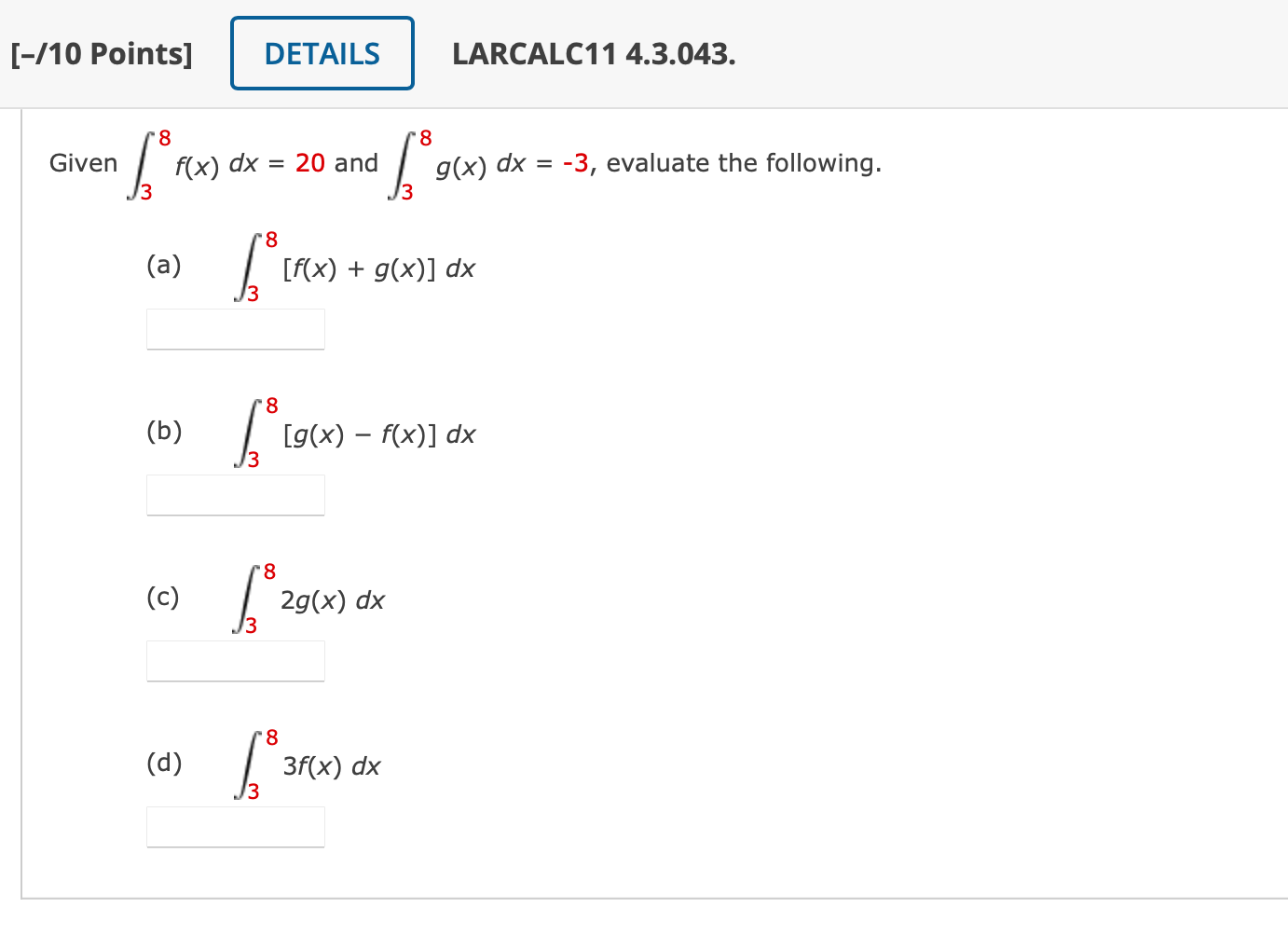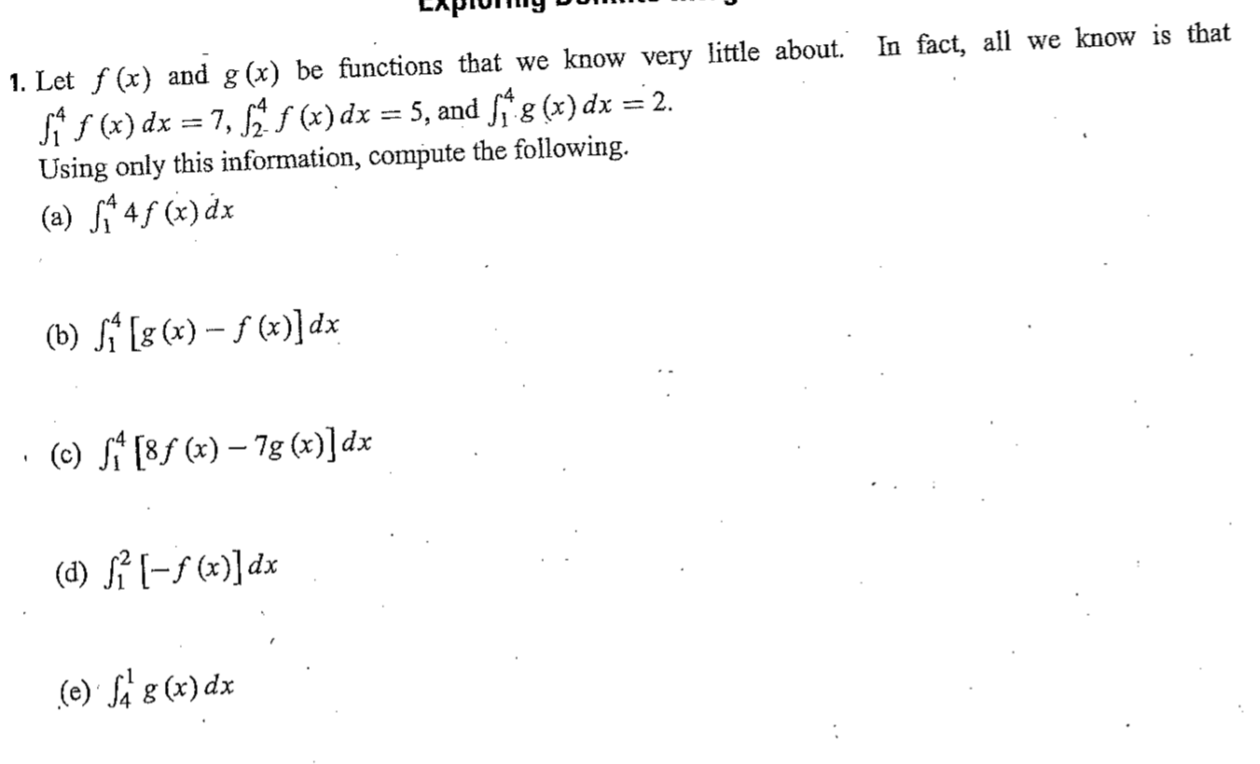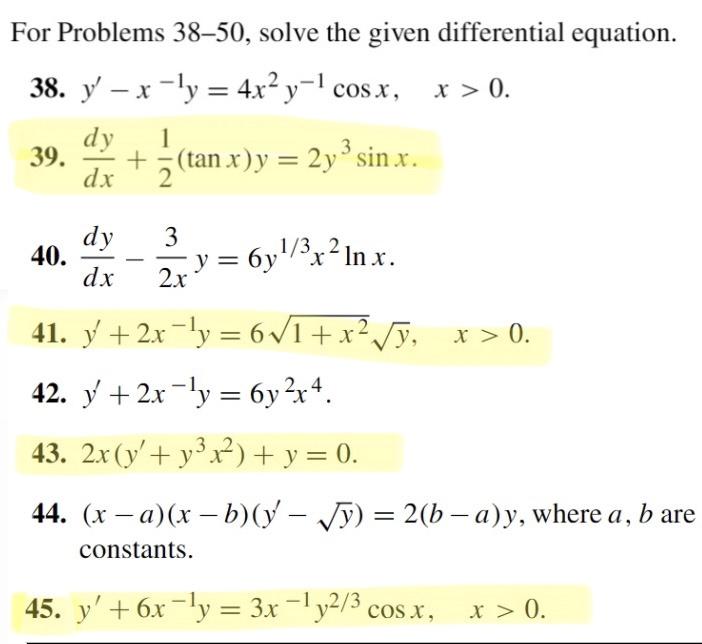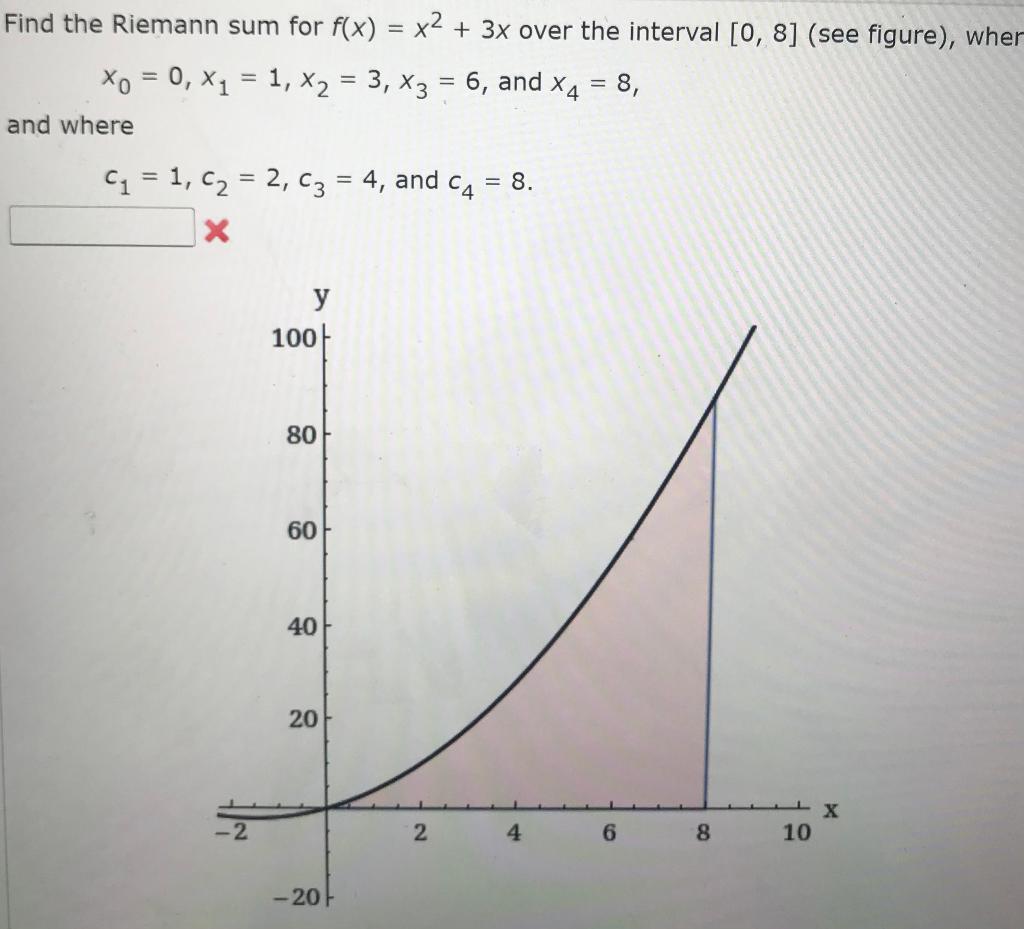

NIST.SP.800-170

Solved 25-54 Evaluate the integral. 32 26. L'* dx 28. ('(1

Solved 24) Given Integrate Limit Between To 50 3f (x)dx=, 50% OFF

Solved (2

Solved Use the method of partial fractions to evaluate each


Solved For Problems 38-50, solve the given differential

SOLVED: Consider the following: f(x, Y) = 8y J = 3x -x2 (2,2) (3) Express the double integral f(x, Y) dA as an iterated integral for the given function and region D.

If displaystyle int { f(x) } dx=F(x), then displaystyle int { { x
Transition paths of protein-folding probed with optical tweezers

Solved 9 Given f(x) dx = 6 and g(x) dx = -4, evaluate the

Solved The table gives the values of a function obtained